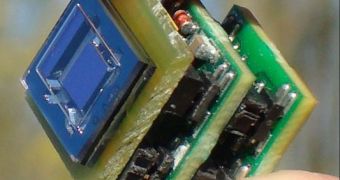Researchers at the IMEC (Interuniversity Microelectronics Center), in Belgium, announce the development of a new class of ultrasmall, fully autonomous, wireless sensors, which are powered up via micromachined piezoelectric harvesters. The new achievement was reached by using the Microelectromechanical systems (MEMS) technology, which enables the creation of complex devices at a very small scale, the team reports.
By harnessing the power of vibrations within or around the sensors, the piezoelectric machines are able to produce a record level of 85μ Watts of electrical power, which are more than enough for standard operations inside the sensing instruments. The research was carried out within the Holst Center's program on Micropower Generation and Storage, PhysOrg reports. The IMEC team tested the new technology on a temperature sensor, which was made to transmit data in fully autonomous mode. The attempt was a success, which means that we could soon see the new technology employed in similar micro- or nanoscale devices.
The piezoelectric devices are also known as micromachined vibrational energy harvesters, and they can be most successful when used to harness vibrations ranging from 150 and 1000Hz in frequency. A wide array of mechanical machines, engines and industrial processes or applications generate this kind of vibrations so, at least in theory, they could be outfitted with energy-harnessing sensors that would put some of the energy that ran them back into the system. The MEMS processes that were used to create the new devices on 6-inch silicon wafers are cost-effective and CMOS-compatible, the team says.
The other component of the system, the temperature sensor, was built entirely out of off-the-shelf components, which means that the devices' overall price could be brought down to a level that would support wide-scale implementation. The piezoelectric power source generates sufficient energy to allow for the sensor to relay back data on environmental temperatures every fifteen seconds, so the IMEC team is satisfied with the current progress. Future innovations in this field could see the MEMS technology being used to produce even more electricity, enabling additional industrial applications.

 14 DAY TRIAL //
14 DAY TRIAL //